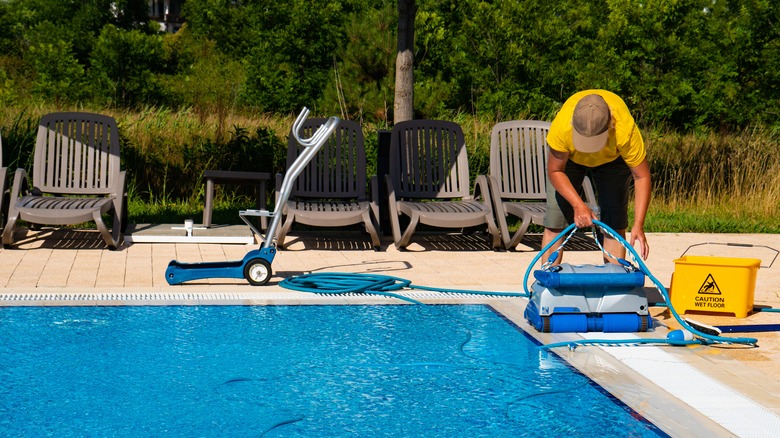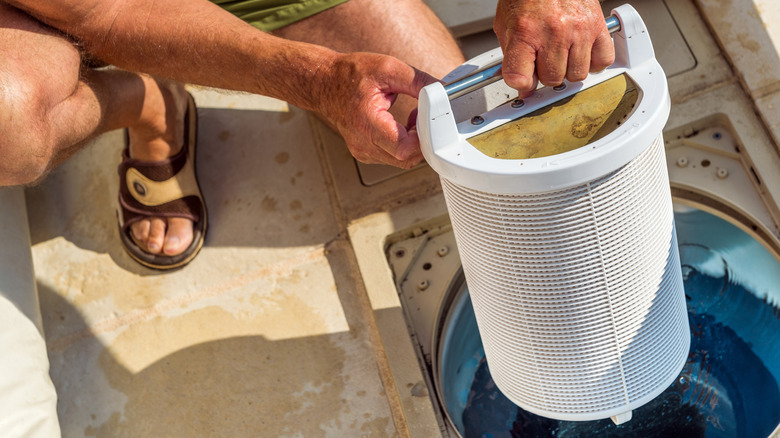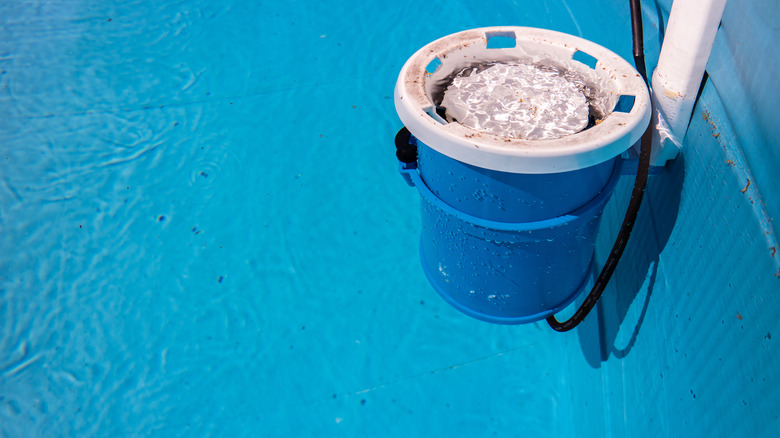Cartridge, DE, Or Sand: Which Pool Filter Is Right For You?
The importance of cleaning a swimming pool is well-known to those who treasure their backyard oasis. Without regular maintenance, the water becomes unsafe, dirty, and discolored, leading to an experience that is anything but relaxing and fun. As part of the cleaning process, making use of a pool filter is a key step that keeps the water in better shape for longer periods of time, reducing the amount of maintenance you must do.
When selecting the design of pool filter that you want to use, you can pick among cartridge, DE (diatomaceous earth), and sand filters. Which one should you pick? Depending on the type of filtration system you have, you may be limited to one design of pool filter that you can install. However, if your system is compatible with any of the three designs, it's worth exploring your options to see which one matches up with your needs.
The cartridge design is the most common, as it's extremely easy to use. The cartridge makes use of a cloth material to remove particles, and it can last for a few years before it needs replacing. The other two designs both make use of a filler material. The sand option consists of a canister that contains sand, which catches contaminants and debris as the system forces water through it. Some models include gravel with the sand. The DE pool filter is the costliest, as it contains diatomaceous earth, but it also can capture the smallest particles of any filter.
Which pool filter delivers the highest level of filtration?
If keeping contaminants and debris out of your swimming water is the most important feature for you, the DE pool filter will give you the best results. Diatomaceous earth consists of the fossilized remains of aquatic organisms that have silica-based skeletons. This material is ideal for filtering tiny particles out of water that passes through the DE. It can remove particles as small as 2 to 5 microns. For comparison, the diameter of a human hair is about 70 microns. Bacteria ranges from 1 to 10 microns, while fine sand particles are 62 to 125 microns in size. Very fine silt is 4 to 8 microns in size.
A pool filter with a sand canister is able to capture particles roughly 20 microns in size or larger. This means it won't be able to remove bacteria from the swimming water, and it will miss some of the finest silt that may appear in your pool water. Additionally, as you use the sand filter, it's going to lose its effectiveness over time as the sand particles erode.
For a cartridge filter, you can expect to remove particles sized anywhere from 5 to 15 microns in size, depending on the design and on the material in use. This gives the cartridge material a better ability to remove fine particles than the sand filter. It still may not remove all bacteria and fine silt, though, like a DE design.
Cost and maintenance concerns with different types of pool filters
A sand pool filter has a mid-range cost, starting at $300. You will have to do some maintenance on this device, called backwashing, that needs to occur monthly in most circumstances. However, this is an easy maintenance process that most backyard pool owners can perform themselves. It only takes a few minutes to perform the backwashing technique, and it doesn't require any extra expense. The process is built into the filter, but it may force you to rework the chemical balance of the water afterward. You'll have to swap out the sand every five to seven years.
The DE filter also requires backwashing to clean the accumulated debris and particles. You'll need to perform this technique every three to six months. Each time you perform the backwash, you must add some DE powder to the filter, which increases the cost of maintenance. You only have to replace the entire DE filter roughly every 15 years. Its initial cost starts at about $520.
The cartridge pool filters do not require any backwashing. Instead, you'll just take the cartridge out of the mechanism and rinse it off with a garden hose to remove the debris. You probably will need to clean the cartridge every three to six months, depending on the size of the swimming pool. The cartridge unit is a little cheaper initially than sand canisters, starting at about $200. Expect to replace it every few years.


